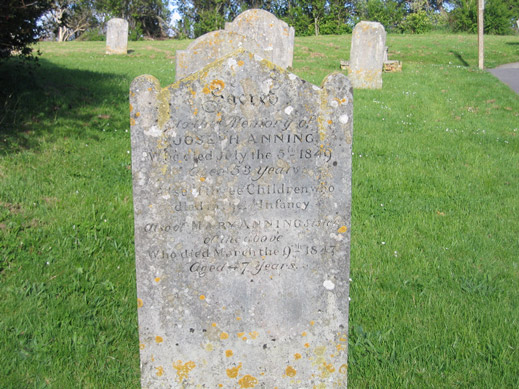In Memory of Mary – Mary Anning (May 21st 1799 to March 9th 1847)
A breakthrough in our understanding of the world around us – a eureka moment in science is a rare thing. More often than not scientific progress is made in small steps with scientists and researchers building upon the insights and work of others. Palaeontology like other sciences is no exception, after all, science is driven forward by ignorance, our desire to turn what we don’t know into what we do know.
Our thoughts today turn to Mary Anning, who died on this day in 1847. Mary was born on May 21st, 1799 in the town of Lyme Regis, Dorset. Her father was a carpenter. Although she had no formal education to speak of and she spent most of her life in poverty, Mary was a pioneer in the sciences of geology and palaeontology, her contribution to science is recognised throughout the world and she is one of only two scientists permitted to have a look-a-like walking the hallowed galleries of the Natural History museum in London.
Mary Anning
Mary is credited with the discovery of many ichthyosaurs, plesiosaurs and the first pterodactyl fossils (pterosaurs). Most of the fossils Mary collected were sold to institutions and private collections, but often no record was kept of her role in discoveries and scientific research.
Although she lacked a substantial formal education, she taught herself anatomy, animal morphology and scientific illustration. She made an immense contribution to the nascent sciences of palaeontology and geology, but much of her work was plagiarised and she was not given the recognition she deserved in her lifetime. As a woman and with a poor social status she was never accepted into the male dominated scientific community.
Towards the end of her life it was rumoured that Mary had taken to drink. Perhaps this was as a result of her struggle for recognition gradually wearing her down, but more likely Mary was drinking to dull the pain of breast cancer. In the mid 19th century, one of the few pain killers that could be afforded by the poor was alcohol. Although, weak and very ill, Mary continued to sell her “curiosities” from her fossil depot in Lyme Regis
News of her illness reached members of the Geological Society in London, William Buckland, the Dean of Westminster used his influence to raise a fund to help support her, but there was little he could do to prevent the inevitable outcome. She died in 1847, just a few weeks before her 48th birthday.
Mary is buried in the little Lyme Regis churchyard, part of which overlooks the bay. I am sure Mary would have appreciated this, as it was in the bay overlooked by the church that Mary earned her living searching for fossils amongst the land slips and mud slides of the cliffs.
The Grave of Mary Anning and Her Brother Joseph
Picture credit: Everything Dinosaur
The then President of the Geological Society – Henry de la Beche wrote a eulogy in her honour, a most unusual tribute as she was not a Fellow.
He wrote: “I cannot close this notice of our losses by death without adverting to that of one, who though not placed among even the easier classes of society, but who had to earn her daily bread by her labour, yet contributed by her talents and her untiring researches, in no small degree to our knowledge of the great Enalio-Saurians and other forms of gigantic life entombed in the vicinity of Lyme Regis.
Fellows raised funds for a stained-glass window in her honour at the parish church at Lyme Regis. The window depicts Mary tending the sick and looking after the poor, an inscription underneath reads: “In commemoration of her usefulness in furthering the science of geology, as also of her benevolence of heart and integrity of life”.
Perhaps the last word for now, about Mary should come from a reporter who wrote in a journal published at the time – “the carpenter’s daughter has won a name for herself, and deserved to win it”.
Good on you Mary, we will always remember.
The fossil discoveries made by Mary Anning has inspired the British-designed CollectA range of marine reptile models: CollectA Age of Dinosaurs Popular Models.







Leave A Comment